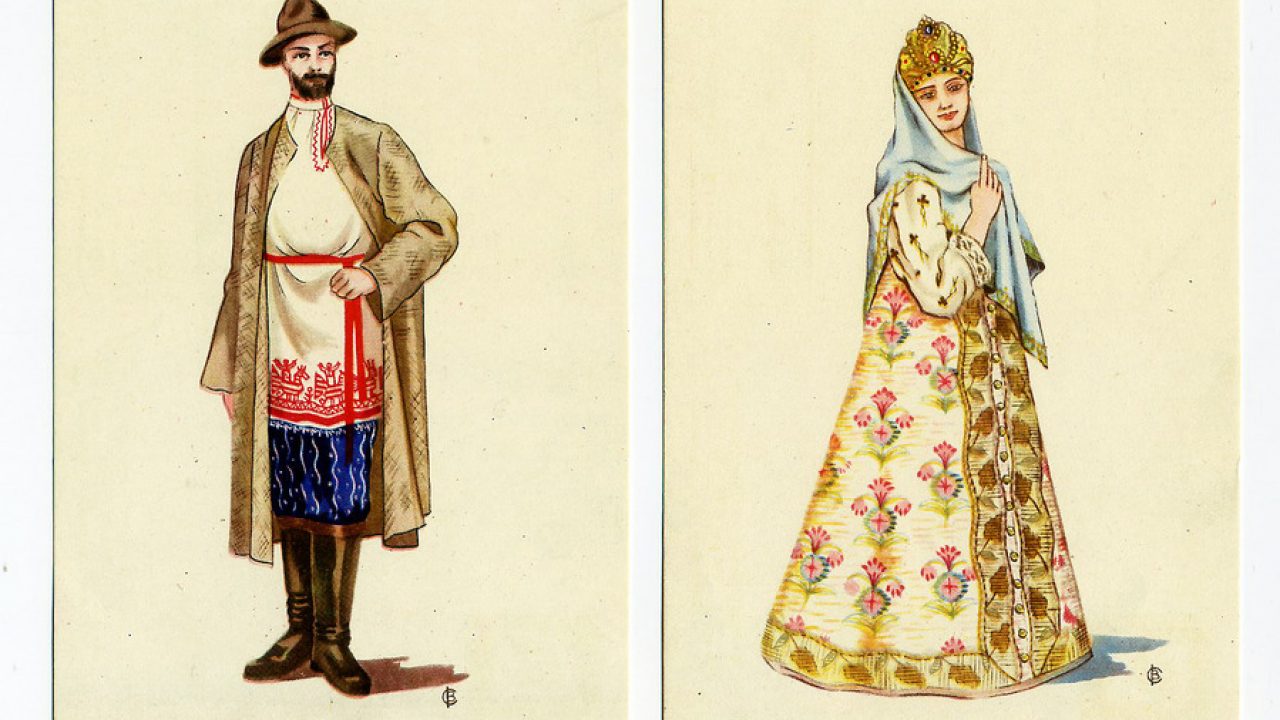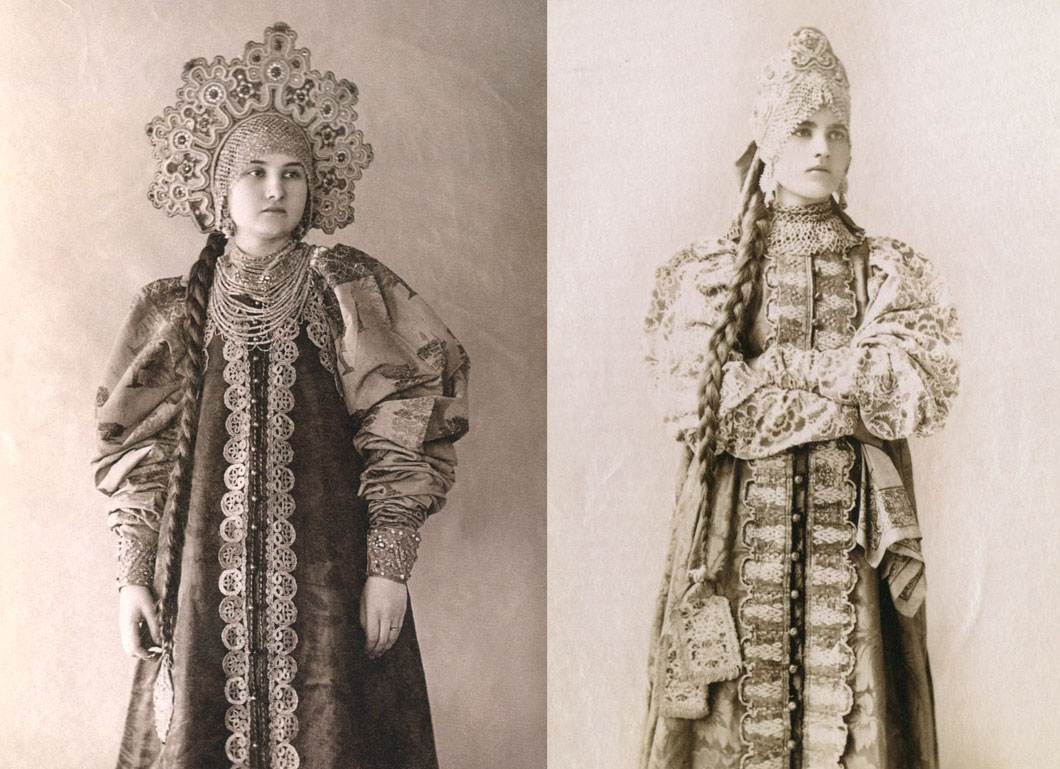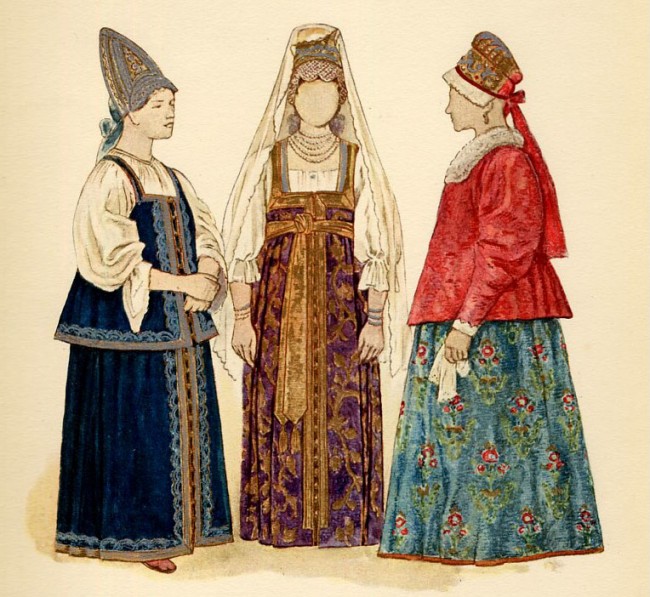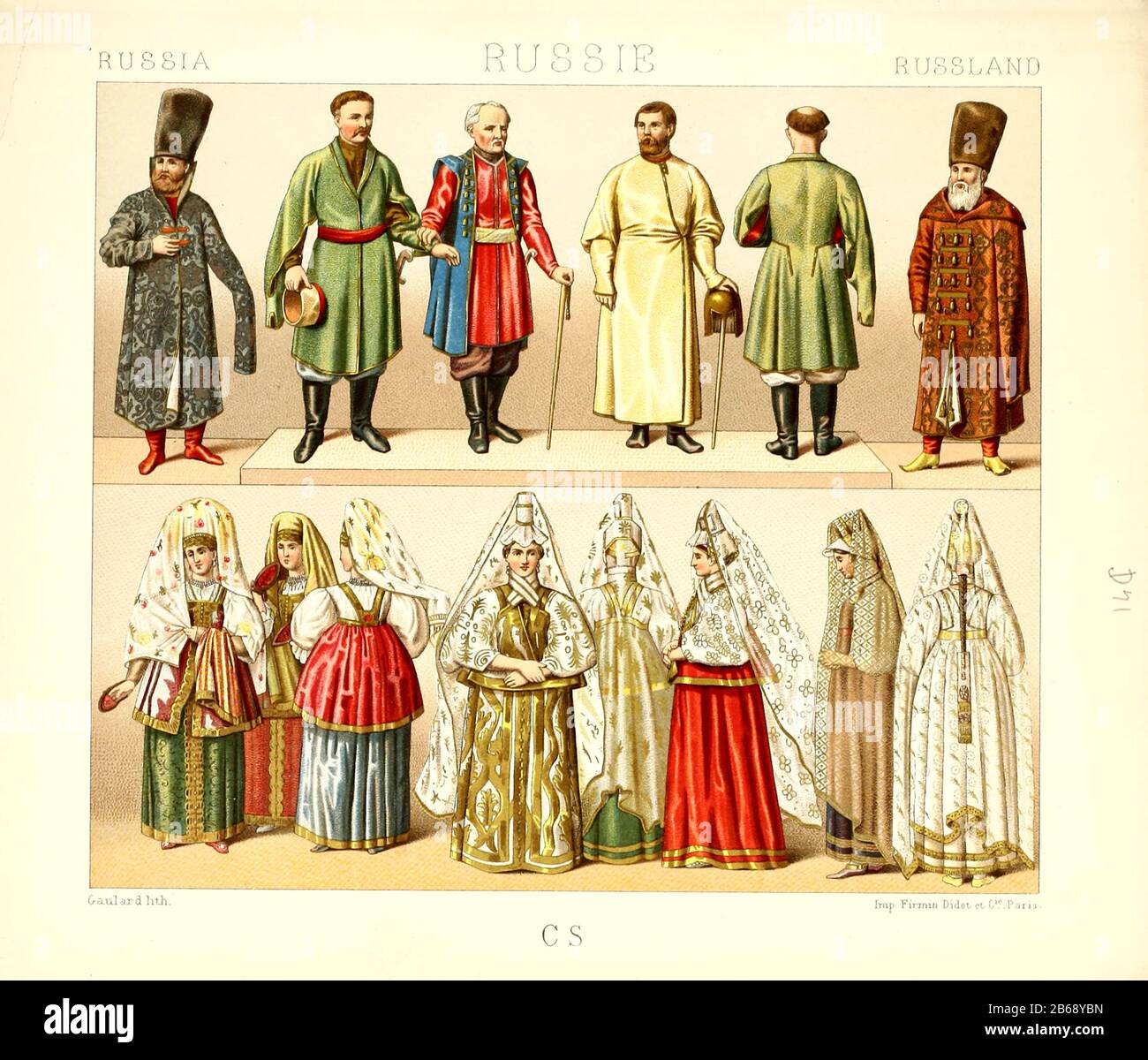Rococo Women Beauty Guide. However more important for the female dress was a type of headdress-the fontange.

Evolution Of Russian Clothing Liden Denz Russia
However more important for the female dress was a type of headdressthe fontange.

. In 1700 Tsar Peter the Great with his admiration for all things from Western Europe prohibited wearing traditional dress in cities. However clothing did become more sober towards the end of the century due to the effects of the French Revolution. Tursky coats and gorlatnaya caps.
The formative element of the European female dress that had been brought to Russia in the eighteenth century was the corset and it contradicted the Russian ideal of beauty. Russian 18th Century Attire. How to Look Great.
The 18th century witnessed the meeting of Russian Orthodox and Western art. 18th century fashion Edit Edit source History Talk 0 Marie Antoinette 1783. Azyam sermyaga and cap.
He introduced a law that fined anyone who entered the city in traditional national clothes as well as anyone with a beard. The 18th century became truly earthshaking in the history of Russia. 1720-1729 18th century decade overview.
Fashion like a Russian. Peter the Great made a U-turn for Russia towards the West. Eighteenth Century Influences on Russian Clothing.
For hunting and rarely knit fabric as alternatives. It was sewn of a width of fabric folded at the weft and cut in front with gores inserted between the back and the. The 18th century is famed for its lavish clothing and both the proportions and decoration of dress reached their heights during this period.
Most often the balakhons had the tunic-like cut. Balakhon is loose overall mens or womens outerwear which was widely spread in the northern and western provinces of European Russia and somewhere in Siberia in the 18th early 19th cc. 18th Century in the Russian history Russia in the 18th century is dominated by two greats both of whom lived in the 18th century.
The Russian word for a shirt rubaha - roo-BAH-khah is derived from ancient Slavic word rub - rOOb - a piece of clothFor many centuries a shirt was the main clothing for both. Although the basic forms remained the samethree-piece suits for men and two-piece gowns for womenthe shapes of these were different. Odnoryadka tafiya and cap.
In the 18th century a new trend in icon-painting began to emerge in Russia. Russian clothing in the 14th-18th centuries. For hunting and rarely knit fabric as alternatives.
The village near the town of Tver in the 17th century. However his reforms were not always and completely favored because of their radical change from the traditional or because those reforms went. See more ideas about russian clothing russian fashion folk costume.
Before the 18th century Russia was. The nineteenth century opened with a fashion landscape that was changing dramatically and rapidly from the styles of a generation earlier. Firstly Peter who created a naval power modernised the country in the European style and established an empire with a new capital looking west and secondly Catherine who continued Peters reforms and widened the empires borders at the expense of.
The French Revolution brought fashions that. Kokoshnik a Traditional Headdress. Breeches The standard main lower body garment for men in the 18th century with alternatives being petticoat breeches primarily for sailors and trousers for lower class men but spreading to other groups toward the end of the century.
Breeches were typically made of woven fabric with leather esp. See more ideas about russian peasant peasant clothing russian clothing. Russian traditional dress began to develop as a specific form in the 9th century.
It was made of sackcloth or twill. These 17951820 fashions were quite different from the styles prevalent during most of the 18th century and the rest of the 19th century when womens clothes were generally tight against the torso from the natural waist upwards and heavily full-skirted below often inflated by means of hoop skirts crinolines panniers bustles etc. 1800-1809 19th century decade overview.
The traditional Russian costume used to be a part of the countrys history up until the beginning of the eighteenth century when Peter the Great proclaimed the Russian dress to be peasant and non progressive. It made abundant use of Western realist techniques. Russian fur coat and cap.
The 1720s marked a distinct change in mens and particularly womens silhouettes from the two preceding decades. The formative element of the European female dress that had been brought to Russia in the eighteenth century was the corset and it contradicted the Russian ideal of beauty. The metamorphosis balls like most things in aristocratic 18th-century Russia were part of this same effort.
While other courts moved on changing and adapting the dress of their courts Russia stayed firmly in its Slavic historical mode and so from 1834 until 1917 the unusual ethnic dresses of Russian court ladies became instantly recognizable and a source of pride at home and abroad - Russian women stood out in foreign courts and at home they made a unforgettable. This turn and its consequences for development of Russia and Russian culture became controversy for scientists and thinkers from the 19th century till. It was the time of radical changes caused by Peter I s reforms.
Until the early 18th century peasants and boyars noblemen wore traditional costumes. While we can no longer personally experience the splendor of 18th-century fashion thankfully many painters of the time left us the answer to the question how did women dress in the 18th century. It was the Russ.
Peter Reforms During his reign Peter I initiated reforms of Russian culture that included dress attire for in court and at home. Mar 26 2017 - Explore cctcbcbcs board Russian peasant clothing 18th century on Pinterest. Russian 18th Century AttireBrandi Cruz.
Womens fashion around this time started to. Originally worn by men the Sarafan was a long trapeze-shaped dress that went through modifications throughout the 16th century Single dress piece with shoulder straps and a sleeveless outer-vest This garment could be modified through fabrics and embellishment to make it. Figures of saints gained weight and solidity and the heavenly world of the icon was submitted to laws of gravity.
The 18th century is famed for its lavish clothing and both the proportions and decoration of dress reached their heights during this period. May 26 2018 - Explore Kimberly Winrottes board 18th century Russian Clothing followed by 120 people on Pinterest. The town of Torzhok in the early 17th century.

Russia History Of Dress Lovetoknow

The Russian Fashion Blog A Brief History Of The Sarafan

Russia History Of Dress Lovetoknow

Evolution Of Russian Clothing Liden Denz Russia

Dressing 18th Century Russia In The Great Screen Queens
Ensemble Russian The Metropolitan Museum Of Art

Russian Costumes Tsar Boyar Belorussian Garb

Ancient Russian Fashion And Lifestyle 18th Century From Geschichte Des Kostums In Chronologischer Entwicklung History Of The Costume In Chronological Development By Racinet A Auguste 1825 1893 And Rosenberg Adolf 1850 1906 Volume 5
0 comments
Post a Comment